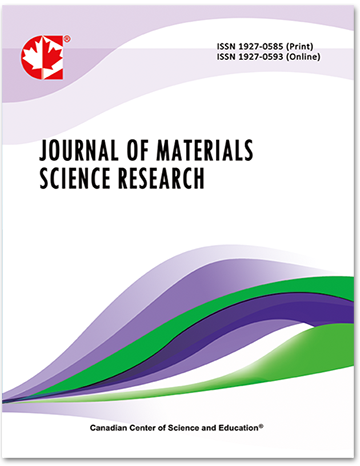Microstructural Characterization of Antimony Modified Carbidic Austempered Ductile Iron
- Abel. A. Barnabas
- Akinlabi Oyetunji
- S. O. Seidu
Abstract
In this research, Scanning Electron Microscope (SEM) analysis was conducted on the produced antimony modified carbidic austempered ductile iron for agricultural implement production. Six different alloys of carbidic austempered ductile iron with varying micro quantities of antimony elements were produced. The produced alloys were heated to austenitic temperature of 910oC, held at this temperature for 1 hour, finally subjected to austempering temperatures of 300°C and 325°C for periods of 1-3 hours. The SEM in conjunction with XRD and EDS was used for the analysis. Microstructural phase morphology, phase constituents and phase compositions were viewed with SEM, XRD and EDS respectively. The results show that various phases such as spiky graphite, blocky carbides, granular carbide, pearlite and ausferrite matrix. The XRD pattern revealed some compounds such as (Fe, Cr)3C, (primary carbide), Cr6C23 (few secondary carbide), (NiFe2O4), chromite (FeCr2O4), Cr7C3 (few eutectic carbide) and Cr3Ni2. In conclusion, it was observed in terms of morphology that chunky graphite, blocky carbide and pearlite phases were present in the cast carbidic ductile iron (CDI) without antimony addition. The CDI with varying quantities of antimony additions shows spiky graphite, granular carbides and pearlite matrix. After the samples were subjected to austempering processes, all the phases were found to be intact except the pearlite phase that transformed to ausferrite phase. The antimony element in the alloys was seen to promote the formation of pearlite phase intensively. The hardness of the samples increases as the antimony addition increases from 0.096wt.% to 0.288wt.% owing to the increase in pearlite phase, while the impact toughness reaches relatively high level, when 0.288wt.% antimony was added, probably due to the refinement of graphite nodules. All the results obtained showed that appropriate content of antimony addition plays an important role in increasing the nucleation rate of graphite nodules, and also lead to improvement in carbide formation thereby providing good balance between wear and impact properties.
- Full Text:
 PDF
PDF
- DOI:10.5539/jmsr.v8n2p36
Journal Metrics
Impact Factor 2022 (by WJCI): 0.583
Google-based Impact Factor (2021): 0.52
h-index (December 2021): 22
i10-index (December 2021): 74
h5-index (December 2021): N/A
h5-median (December 2021): N/A
Index
- CAS (American Chemical Society)
- CNKI Scholar
- Elektronische Zeitschriftenbibliothek (EZB)
- EuroPub Database
- Excellence in Research for Australia (ERA)
- Google Scholar
- Infotrieve
- JournalTOCs
- LOCKSS
- NewJour
- PKP Open Archives Harvester
- Qualis/CAPES
- SHERPA/RoMEO
- Standard Periodical Directory
- Universe Digital Library
- WJCI Report
- WorldCat
Contact
- John MartinEditorial Assistant
- jmsr@ccsenet.org
